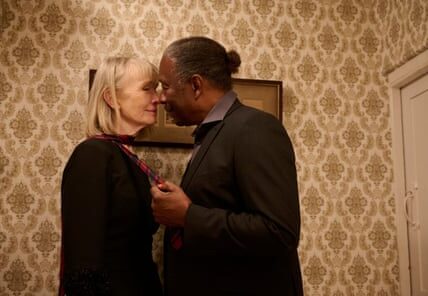
History buffs, be warned: Cursed Histories is heavy on the curses but light on the history, and if I didn’t know better, I would suspect that at least one of the historians offering their expertise here is struggling to keep a straight face.
The programme purportedly sets out to examine whether curses are real or not by looking at historical events that have been linked to supernatural harm. But it doesn’t try very hard to be neutral. It kicks off with a voiceover explaining that a stone age mummy “unleashes a spell of death for those who dare to get too close”, which makes it pretty clear which horse it has chosen to back: one called Sticking Two Fingers Up At Perfectly Rational Explanations For Loosely Connected Events. Odds are at least 25-to-one that you’ll get a sensible story here.
That said, Cursed Histories is largely harmless fun, in a ghost-stories-round-the-campfire sort of way, and I spent a lot of the first episode realising it would make a great drinking game, alcoholic or non-, depending on your preference. You have to take a sip every time someone thinks they can get away with saying something objectively bonkers if they put a question mark at the end of it (“Did the trauma trap the souls to the land?”). Another big sip every time someone says “soul” or “evil”. And finish your drink if you get to the end of this without noticing that one of the historians is 99% likely to be Tobias Fünke from Arrested Development.
In the first tale, the famous discovery of the 5,300-year-old remains of “Ötzi the Iceman”, in a remote region of the Ötztal Alps in 1991, leads to a “spell of death” and “a lethal curse” for many of the people who have come into contact with the mummified corpse. One forensic scientist dies in a car crash on his way to give a lecture on his findings. “Dead men don’t speak, and they don’t give lectures either,” says the narrator, which is fabulously nonsensical. Another man, a journalist who filmed the extraction of the body, dies of a brain tumour. Yet more associates of the discovery die in mountain accidents: a rescue gone wrong, and an avalanche, which does suggest that this remote region of the Alps might be the problem, rather than a mummy’s curse. “No one knows when the Ice Man’s vengeance will rise again,” we are told – but as Ötzi has been on display in an Italian museum for some time now, attracting about 300,000 visitors a year, it is fair to say that he has been keeping a low profile on the vengeance front recently.
The City of Screams, Shahr-e Gholghola, in what is now Afghanistan, fares better in terms of compelling historical storytelling. At this spectacular archaeological site, “many people have heard the screams of the dead”, owing to its dark and bloody history: “Why do its souls remain eternally trapped?” (Sip! Big sip!) Here, we get the story of Genghis Khan, the murder of his favourite grandson, a shah’s daughter’s betrayal and the massacre of every animal and human within the city’s walls. At night, people say, you can hear the screaming. The city has never been refortified, we are told, ominously. Is it the trapped souls, putting people off?
The final instalment in this loose trilogy of curse-adjacent folklore has to do with the Marquis de Sade and ownership of the original scroll manuscript of 120 Days of Sodom. After the wailing souls and the mummy’s curse, this feels like a drop-off in supernatural quality control. We get a brief history of this “gospel of evil”, some of the bad things Sade did or was accused of doing, and a potted account of immorality in the late 18th century.
Then comes the question: could it be dangerous to own the manuscript? Does evil seep from its pages? Everyone who has ever owned or published it has had something negative happen in their life, apparently, though as I imagine pretty much every adult human has had something negative happen in their life, this is a fairly open-invitation category. More specifically, one former owner experienced a very stressful court case and another was accused of running a Ponzi scheme. It is at least acknowledged that he brought that one on himself, but even so, we are left to ponder whether this is a “container of malevolent energy”.
Later episodes in the series look at Marie Antoinette’s blue diamond, Shakespeare’s skull and at least another couple of mummies’ curses. Drink up!
after newsletter promotion
Source: theguardian.com



